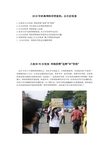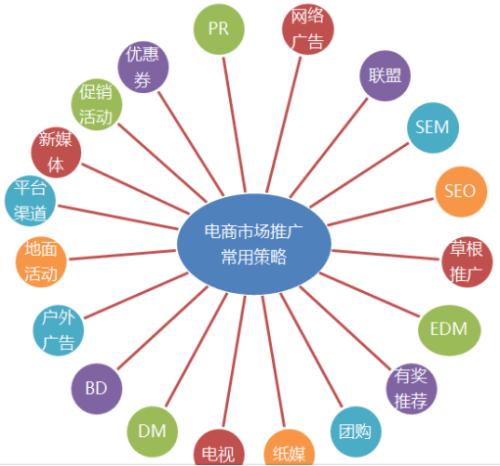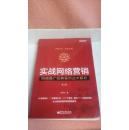网络营销十大经典案例(国外英语资料).doc

2009网络营销十大经典案例(国外英语资料)The second chapter animal nutrition requirements and feeding standardsTeaching requirements1。 familiar with the basic concepts of nutrition requirements and feeding standards;2。 to understand the determination of nutritional requirements and indicators of feeding standards;3。 be familiar with the concepts of maintenance and maintenance, understand the significance of maintaining needs and the maintenance requirements of main nutrients;4。 grasp the basis of the nutrition requirements of animals at different physiological stages, and understand the relationship between the nutrition level and the production performance of livestock and poultry。
Section 1 basic concepts of nutrition requirements and feeding standardsNutritional requirements: nutritional requirements are the amount of nutrients needed per head (animal) per day for energy, protein, minerals and vitamins。 Animals must constantly ingest nutrients from the outside during their survival and production。 Different animals, different physiological conditions, different production levels and different environmental conditions have different nutrient requirements, so it is necessary to specify the nutritional requirements of specific animals in order to guide the production。
Two, feeding standard: according to a large number of test results and the actual production of animal breeding summary of various nutrients to the specific animal quota provisions, the provisions of this quota nutrition system called feeding standard。 In brief, feeding standards are descriptions or descriptions of the amount of nutrients required by an animal。Types of feeding standards can be roughly divided into two categories, one is the national regulations and promulgated the breeding standard and called the national standard; the other is a large breeding company according to the characteristics of fine varieties or lines of their breed, developed with the feeding standard varieties or lines of nutritional needs, called for standard。
Feeding standards should be used flexibly in accordance with specific circumstances。Second methods of animal feed and nutrient utilization and nutritional requirementsI。 Research Methods of animal utilization of feed nutrients(a) chemical analysisChemical analysis method in animal nutrition refers to the chemical composition of the feed, animal and animal excrement in (nutrients, metabolites, toxic and harmful substances) for quantitative analysis, the evaluation is also must study and feed in, the most basic means of animal nutrition。
The nutrient analysis included: water, crude protein, crude fat, crude ash, fiber and nitrogen free extract。 This method of analysis has five problems。 Pure nutrition analysis will be the development direction of feed nutrient analysis。 The analysis of chemical components in animal tissues, blood and excreta will help determine the nutritional requirements of animals and the digestion and metabolism rate of feed。(two) digestion test;Digestion tests include in vivo digestion test, nylon bag method and in vitro digestion test, in which digestion test is the most important。
It also includes: full fecal collection (fecal fecal collection, tail end leakage, fecal Collection), indicator method (external indicator, endogenous indicator), each of which has its advantages and disadvantages, and is suitable for different animals。Anal total fecal collection operation is relatively simple and is widely used for the determination of main nutrients in feed digestibility of various animal research in animal nutrition and feed science, the test process is divided into pre feeding period and formal period of two stages; the ileal collection method is digestion test a typical fecal collection method, this method can all feces (conventional digestion test) can also be part of fecal collection (indicator method), the determination of amino acids and vitamins are mainly used in pig digestibility; advantages prominent indicator method is to reduce the amount and frequency of feces were collected, which can save time and labor; the usually the nylon bag method in the rumen degradation rate determination of protein and organic matter in feed nutrients, to serve as an important basis for evaluation of ruminant animal feed nutritional value; from the body digestion test method Is the determination method of feed digestion can save manpower and time and rate, the method is a rapid method for the determination of nutritive value of fish feed is reliable, has less cost, affected by environmental disturbance and animal variation is small, the characteristics of the short test cycle。
(three) metabolic testMetabolic tests included slaughter trials, mass balance tests, and energy balance tests。 The material balance test is mainly through the deposition of animal in vivo determination of carbon and nitrogen, crude protein, crude fat reflect in feed utilization, especially nitrogen balance test in the evaluation of feed protein biological value, protein utilization index is widely used。 It is also a necessary research tool for protein requirements in animal bodies。 The energy balance test methods of ruminant are direct calorimetry, indirect calorimetry, carbon and nitrogen balance method。
(four) feeding test;Seven methods of feeding test usually adopts control test, matching test, randomized block test, factorial experiment, staging test, cross test and Latin square test in the design process, the control should follow the principle of randomization test and the only difference principle; in animal feeding process faces group and single feeding choice。 How to choose the advantages and disadvantages should be based on the purpose of the experiment and the different feeding mode。 The advantage of group feeding is that animals feed on food, so they have more feed intake and faster growth rate。

The feeding conditions similar to those in production practice can save equipment and reduce the workload of feeding and data collection。 But its shortcomings are also prominent, that is, the feed consumption of individual animals can not be counted out, the average can only be counted for statistical analysis。 In addition, due to the poor health of the tested animals and the time of death during the experiment, the feed consumption can not be measured accurately, and the average estimate can only be done, thus affecting the accuracy of the test。
Furthermore, the test requirements of restricted feeding, feeding group may lead to small animal snatch caused by lack of group differences in body weight increase animal, and within group error increases。 In order to reduce the experimental error, multiple repetitions can be used in group feeding to make up for the shortcomings。 Feeding experiments on small animals (such as chickens, pigs, etc。) were carried out by group feeding。 Animal experiment and digestive metabolism test, single feeding group can make up for the shortcomings, statistics of individual feed intake and growth rate and other indicators, but the single feed increased equipment and manpower input, test workload, and animal feed single may reduce the intake from and slowed the growth rate, and the actual in the condition of production will have a certain gap。
The methods of measurement include synthesis method and factorial method。 The synthesis method is one of the most widely used methods for determining the nutritional requirements of animals。Third, the index of feeding standardsFirst, intake of dry matter or dry matter intake expressed。 According to the principle of animal nutrition and a large number of test results, the feed intake stipulated in the feeding standard lays down scientifically the intake of animals at different stages of growth and development。
Two, energy due to the presence of digestive utilization of feed problems, so there is energy of digestion (DE), metabolizable energy (ME), net energy (NE) said。 General poultry for energy needs by ME, and the energy requirement of pig, some countries with DE said, some countries represented by ME, such as the United States, Canada, China, represented by DE, and the European ME, also DE。 The need for energy in ruminants is expressed in NE。Three, pig and chicken protein generally with the crude protein (CP) expressed the need for protein。
Cows generally use digestible crude protein (DCP) to indicate the need for protein。Four, amino acid standards listed in the list of essential amino acids (EAA) the amount of demand, its expression is useful, every day (per head) need to indicate how many, useful units, nutrients, such as the concentration。For single stomach animals, protein nutrition is actually amino acid nutrition, and the use of available amino acids to represent animal protein requirements will be the direction of development in the future。
Five, vitamin general fat soluble vitamins need to be expressed in international units IU, and the amount of water-soluble vitamins should be expressed by mg/kg or g/kg。Six。 Mineral constants, minerals, mainly listed calcium, phosphorus, zinc, sodium, chlorine requirements, expressed in percentage; trace elements listed iron, zinc, copper, manganese, iodine, selenium requirements。 Ruminants also list the amount of cobalt needed, and trace elements are usually expressed in mg/kg。The fourth section maintains the nutritional needsI。
The concept and significance of maintenance:”Maintenance” means that the weight of healthy animals does not increase or decrease without production。 All kinds of nutrients in the body are in the balance of payments, and the process of catabolism and anabolism is in a state of zero balance。 Sustaining need is the amount of energy, protein, minerals, vitamins and other nutrients that an animal needs to maintain in the maintenance state。 In animal production, need to maintain production needs are invalid, and is an essential part of the animal needs, only after meet the need to maintain, excess nutrients was used in the production, and the different needs of different animal maintenance, due to the various nutrient requirements of different animal studies need to maintain and influence the factors of maintenance, as far as possible to reduce the impact of the need to maintain the animal food nutrients for maximum production, to decrease the cost of production, it is important to improve economic benefit。
Two, maintain the nutritional needs1,the maintenance of energy needsSustained energy is required for basal metabolism网络营销经典案例, free exercise, and energy expenditure for thermoregulation。 For animals, because the underlying metabolism is not easy to measure, fasting metabolism is usually used as a major part of maintaining energy, coupled with free movement and maintenance of body temperature energy expenditure, both for the maintenance of animal energy。 Fasting metabolic heat was bw0。75, B per kg metabolic body weight Fasting Metabolism heat production, so as long as you know the weight of the animal, we can calculate the fasting metabolic heat generation animal, such as fasting metabolism heat production of 600 kg of dairy cows: 320 x 600 x 0。

75=320 121。23=387936 (KJ)。 The movement of chicken and pigs and the maintenance of body temperature required 50% of the energy required for basal metabolism, and 20-30% for cattle and sheep。2。 Maintain protein requirements:Endogenous urinary nitrogen is defined as the minimum level of body protein catabolism required by animals during maintenance and excretion of nitrogen through urine。 Calculation of endogenous urinary nitrogen: endogenous urinary ammonia excretion is related to metabolic weight, that is, daily metabolism weight per kilogram, excreted endogenous urinary nitrogen 150mg。
Metabolism of fecal nitrogen is the excretion of nitrogen from feces when animals are fed ammonia free diet。 The calculation of the metabolic fecal nitrogen metabolic fecal nitrogen have a certain relationship with the endogenous urinary nitrogen metabolism, pig and chicken fecal nitrogen is endogenous urinary nitrogen 40%, Ma rabbit was 60%, 80% for ruminant animal。In the maintenance state, the ingested proteins are mainly used to supplement endogenous urine nitrogen, metabolize fecal nitrogen and body surface nitrogen loss。
In the maintenance condition, because the animal is used to update the hair, hoof and feather, need skin when the protein is very few, so the surface nitrogen losses are generally ignored, so the need to maintain animal protein available endogenous urinary nitrogen and fecal nitrogen metabolism estimates, as long as the calculated endogenous urinary nitrogen and fecal nitrogen metabolism, can be calculated protein requirement for maintenance。(endogenous urinary nitrogen + metabolism, fecal nitrogen) *6。
25/ protein digestibility / protein biological potency = maintenance of crude protein requirementsIn the absence of minerals, animals can use minerals repeatedly。 Because of the high degree of recycling, the mineral losses in vivo are relatively small。The metabolism of vitamin and other nutrients metabolism, no endogenous losses, at the same time as the vitamin synthesis and decomposition of the needs of affected by dietary factors, so vitamin needs generally do not need to maintain the estimate。
Fifth production needsFirst, the nutritional requirements of animal growth1。 Concept: growth is the proliferation and enlargement of organism cells, the development and function of tissues and organs are becoming more and more perfect。 This is the result of the accumulation of protein, fat,mineral and water。 From the point of view of production网络营销经典案例, it is the preparation stage of product production, and the nutrition of growth stage has great influence on animal production。2, the influencing factors: the factors affecting animal growth are animal species, nutrition, birth weight, environment and so on。
(1) in animals with different breeds, the body protein and body fat deposits are different, and lean meat pigs lean more than body fat during the whole growth process。 In general, the growth rate is greater than the parent sire of avian livestock, livestock and poultry carcass is mother thin。(2) the level of nutrition nutrition affects the growth rate of the animal weight and content, generally high nutrition, animal growth, fattening period is short, fat and protein deposition increased, but the increase of protein deposition than fat。
Dietary protein, amino acids and energy proportion on growth will be affected, the early growth stage, if the lack of protein and amino acids, influence on the growth rate of the larger, the smaller the effect of animal caused more serious, especially in lean pigs。(3) the environmental temperature has the greatest impact on animal growth, too high and too low affect the deposition of protein and fat, which results in the decline of animal growth rate。3。 nutrient requirements for growthThe energy required for growth includes maintenance, needs and growth needs。
Such as: Ei=aw0。75+C P+d FType Ei: energy requirement, a: each 1kg metabolic weight maintenance energy requirements, W0。75: weight (kg), C metabolism: energy, for each protein deposition of 1G Delta P: Daily deposition (g), D protein quality: each fat deposition of 1G energy required, Delta F: Daily deposition the amount of fat (g)。4。 protein needed for growthThe growth of protein requirements refers to diets that feed different levels of protein to maximize protein gain and maximum feed utilization。

It can also be calculated by formula。CPm + CPnCP (g/) =————————NPUIn the formula, CP is the total crude protein requirement; CPm and CPn are the crude proteins required for maintenance and growth (deposition); NPU is the net protein utilization rate, which is equal to the biological value multiplied by the digestibility。 The key part of this formula is the crude protein required for growth。5。 the growth of minerals: the need for animal growth on mineral is mainly considering the needs of calcium and phosphorus, in order to ensure the normal growth of animal bones, different animal can adopt different methods for determination of calcium and phosphorus requirements。
Two, the nutritional requirements of animal meat1。 The characteristics of nutrition requirements of meat producing animals: the early protein requirement of the meat animals is greater than the latter, and the energy needs later than the prophase。 At the same time, we should pay attention to different animal feed nutrients utilization rate is different2。 Nutritional requirements: methods for estimating the nutritional requirements of meat animals。 Chicken on energy and protein requirement is relatively high, usually in broiler diets to add oil to meet the energy needs of broilers; pigs need high energy, the protein needs less than chicken。
Three。 Nutrition requirement of poultry laying1 eggs, the nutritional composition mainly consists of three parts: egg shell, egg white, egg yolk composition, because poultry species, varieties, age, season and egg breeding status is different, the three parts of different proportion in the whole egg, the egg is the main component of calcium carbonate, accounting for about 93% of the egg shell for the rest, magnesium carbonate, calcium phosphate, protein, sugar etc。。 The main components of egg white are water and protein, the ratio of protein to water is 1:8, and egg white protein is mainly glycoprotein。
The main components of egg yolk are proteins, lipids。2。 Nutritional requirements: the energy requirement of laying hens can be divided into maintenance requirement, weight gain requirement and egg production requirement。Maintenance needs to be related to weight, environment, temperature, and activity。 In general, the dietary 9。2-14。2KJ/kg can range, laying hens, ducks energy consumption is relatively constant, will not affect the egg production。 The metabolism of laying hens can usually in concentration between 10 and 12KJ/kg; protein and amino acid in egg laying poultry needs can be divided into maintenance, weight gain, feather growth and renewal, laying, laying hens methionine is usually the first limiting amino acid, due to the influence of environmental temperature on feed intake, and dietary protein levels in the summer and winter increased, decreased; in minerals, requirement of egg laying poultry on calcium and phosphorus, sodium, especially calcium, calcium needs (g) / only。
Day = need to maintain (g/。 D) + (hens need g/ only。 The utilization rate of calcium / day) * laying rate; vitamin requirements for variety, age, laying rate, environmental conditions change。Four, the nutritional needs of lactation1, milk composition and feed: lactose from glucose (pig) and propionic acid (cattle and sheep) synthesis, milk fat is composed of glucose and acetic acid, and acetic acid and is composed of? – hydroxybutyrate synthesis, synthesis of raw milk protein into amino acids, glucose, volatile fatty acid。
Vitamins, minerals, whey, albumin, and immunoglobulins are spread directly from the blood to the milk。2 nutritional requirements: the energy and protein requirements of lactating animals include maintenance needs, weight gain needs, and lactation needs。 The mineral requirements of lactating animals include the maintenance of the need and the need for milk production, while the vitamin requirements are mainly vitamin A, D, and E。Five, the nutritional needs of female reproductionTo gravid energy to maintain weight needs, needs and the needs of fetal growth and development, pregnant cows lactation should also need nutrition plus lactation sows; the protein needs can be divided into maintenance and pregnancy need requirement of pregnant cows on protein can be divided into two parts and non rumen degradable protein protein degradation; gravid requirement of calcium and phosphorus with fetal growth and increase, trace minerals: manganese, zinc, iodine, selenium, copper and cobalt deficiency will affect the reproductive performance, so we should pay attention to add these minerals; vitamin A, D and E are very important for breeding。
Six, the nutritional requirements of hair productionEnergy needs and wool wool production itself contains energy, high dietary energy, high yield of wool, wool fiber diameter is bigger; the protein is mainly in wool keratin, relatively high cystine content in wool keratin, so the animal in the cystine requirement is relatively large, including amino acids is the first limiting amino acid; mineral wool growth effect of iodine, cobalt, copper, zinc, sulfur, etc。; sheep should pay attention to the supply of vitamin A, riboflavin, biotin, niacin, pantothenic acid。
These vitamins and skin health, we know that wool is a product of skin epidermis, if the skin epidermis and attachment organs atrophy, desquamation and Mao Xiang hyperkereratosis, then the sebaceous glands dysfunction, they will reduce the influence of rough skin and wool。Seven, the causative animal nutritional needsAnimal energy needs and causative maintenance needs, work needs。 The protein needs, in general, need not to increase because of the causative animal protein and the increase in workload, again will only increase the need for power, will change the proportion of energy and protein, so with the increased workload, the proportion of energy density and protein diet should pay attention to the change。

Minerals are important to animal such as a horse in battle, causative, muscle activity of phosphorus and potassium consumption increased, at the same time due to muscle contraction, produce lactic acid and sodium phosphate also need to balance, and horses in the causative, increased sweating, will emit a large amount of minerals, so we should pay attention to add minerals。Sixth feeding standards and their development trendsFeeding standard is a summary of scientific experiments and production practice by nutritionists, which provides a technical basis for rational design of feed。
The nutritional index in energy feeding standard (metabolizable energy and digestible energy, net energy), protein (crude protein and digestible crude protein), protein energy ratio, crude fat, crude fiber, calcium, phosphorus (P, P), a variety of amino acids, trace minerals and vitamins, the lack of the nutrition index and excess on animal performance will produce adverse effects。1。 Feeding standards: according to the different physiological characteristics of different livestock and poultry nutrition characteristics, reasonably determine the needs of different nutrients。
Main attention:Energy levels are adjusted by changes in conditions such as the environment。 The energy demand of poultry are influenced by many factors, species, sex, Zhou Ling, nutritional status, dietary and environmental factors affecting the energy needs of poultry, chicken egg with basal metabolism than general weight high, the need for energy is higher than that of laying hens, therefore should generally be to meet its energy needs to add oil in the diet, otherwise it will affect the growth of broiler。
Influence factors on pig energy requirements are: dietary factors, environmental factors, activity level, population size, the grain protein content of high protein or poor quality, demand of pig energy increases; the environment temperature is too high or too low will increase the demand for energy in pigs。Lack of energy supply in young cattle will lead to stunted growth and delayed onset, while the insufficient energy supply of dairy cows will lead to a decrease in milk production, and a serious shortage of long-term energy may also lead to a decline in reproductive function。
Animaldiets standard column to amount of essential amino acids in diet often percentage or per head per day (only) how many grams said。 For optimum production performance, adequate amounts of essential amino acids must be provided in the diet。 Ruminant animal rumen microorganisms can be due to microbial protein synthesis, so the need for essential amino acids is not as important as pig and chicken。Feeding standard of pig and chicken are listed in 12 kinds of minerals, including calcium, phosphorus, sodium, potassium, magnesium, ammonia, copper, iodine, iron, manganese, selenium and zinc。
Ruminants also need sulfur, cobalt, and molybdenum。 Dietary calcium and phosphorus, too much interference magnesium, manganese and zinc and other elements of the absorption and utilization, for laying hens, calcium and non phytate phosphorus (P) ratio of about 2:1 more appropriate, but laying the calcium requirement of high calcium, and nonphytate phosphorus ratio should reach 12:1。 The ratio of calcium and phosphorus in pigs fed corn and soybean meal was 1~1。5:1。Vitamin A, D and E are needed in ruminant diets。
Rumen microorganisms can synthesize vitamins K and B vitamins, so it is generally not lacking in these animals except for young ruminant animals。 If there is a considerable amount of high quality forage diets of ruminant animal, generally do not lack of vitamin A, D, E, because of high quality forage contain vitamin A precursors, beta carotene and vitamin E, vitamin D hay, if fed silage or lack of sunlight, you need to add grease soluble vitamin。Pig and chicken in vivo synthesis of vitamin C, can meet the needs of the general, only in the stress conditions of vitamin C, vitamin A, D, E, K, B, riboflavin, niacin, pantothenic acid, choline, vitamin B6, biotin, folic acid, vitamin B12 should be added。
2, feeding standards and their comparison: with the NRC standard on chicken, pig, cattle feeding standards, division stages, requirements and evaluation indicators of the three aspects of a systematic comparison。***[JimiSoft:, Unregistered, Software, Convert, Part, Of, File, Read, Help, To, Know, ONLY, How, To, Register。]***

